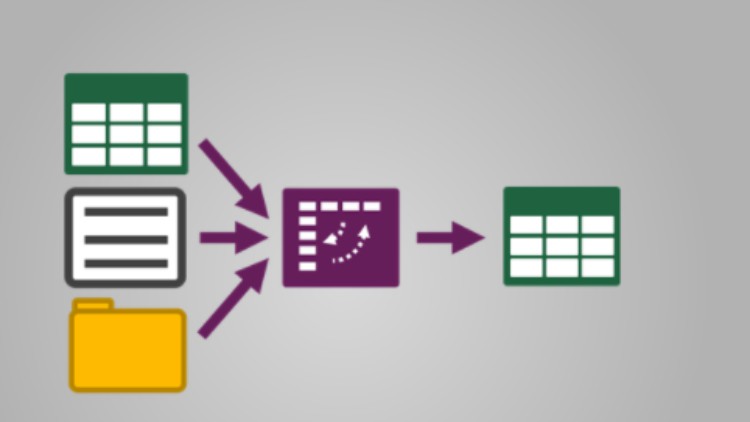
Prepare and Transform Data with Power Query
What you will learn
Connect to data source
Create and manage query groups
Merge queries
Append queries
Create conditional columns
Split columns
Transform less structured data
Description
Power Query is a data transformation and data preparation engine. Power Query comes with a graphical interface for getting data from sources and a Power Query Editor for applying transformations. Because the engine is available in many products and services, the destination where the data will be stored depends on where Power Query was used. Using Power Query, you can perform the extract, transform, and load (ETL) processing of data.
Business users spend up to 80 percent of their time on data preparation, which delays the work of analysis and decision-making. Several challenges contribute to this situation, and Power Query helps address many of them.
Power Query enables connectivity to a wide range of data sources, including data of all sizes and shapes.
When using Power Query to access and transform data, you define a repeatable process (query) that can be easily refreshed in the future to get up-to-date data.
In the event that you need to modify the process or query to account for underlying data or schema changes, you can use the same interactive and intuitive experience you used when you initially defined the query.
Power Query offers the ability to work against a subset of the entire dataset to define the required data transformations, allowing you to easily filter down and transform your data to a manageable size.
Power Query queries can be refreshed manually or by taking advantage of scheduled refresh capabilities in specific products (such as Power BI) or even programmatically (by using the Excel object model).
Because Power Query provides connectivity to hundreds of data sources and over 350 different types of data transformations for each of these sources, you can work with data from any source and in any shape.
The Power Query user experience is provided through the Power Query Editor user interface. The goal of this interface is to help you apply the transformations you need simply by interacting with a user-friendly set of ribbons, menus, buttons, and other interactive components.
The Power Query Editor is the primary data preparation experience, where you can connect to a wide range of data sources and apply hundreds of different data transformations by previewing data and selecting transformations from the UI. These data transformation capabilities are common across all data sources, whatever the underlying data source limitations.
Content